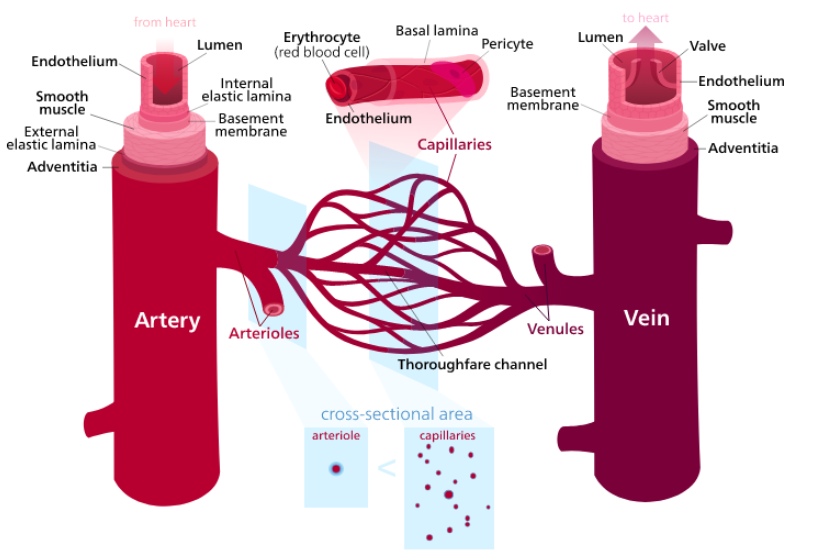
Why do capillaries have small lumen?
Answer
462.6k+ views
Hint: Capillaries are very thin blood vessels. They connect arteries and veins. The hollow opening inside the blood vessel is called lumen.
Complete answer:
The blood is carried to different organs through the blood vessels-artery, veins and capillaries. The arteries carry oxygenated blood, the veins carry deoxygenated blood and the capillaries are the site where the exchange of gases between the blood and tissues takes place. The tissues that are highly active like muscles, liver have abundant capillaries whereas the less active ones have less number of capillaries.
The capillaries are a very fine thread-like structures through which even an RBC cannot pass easily. They are the smallest and the abundant blood vessel found in the body. They form the connection between the artery and veins. The walls of the capillaries have thin layer of endothelium cells which help in better exchange. These tube-like structures have a hollow lumen through which the blood flows. The lumen of the capillaries is very small in size so that the surface area to volume ratio increases. This facilitates better exchange of oxygen, nutrients and other toxins to and from the blood and tissues.

Thus, we can say that the smaller lumen allows better exchange of substances.
Note: The exchange of materials across capillaries takes place by two methods- diffusion where the exchange of gases takes place with respect to the concentration gradient and pinocytosis which is known as cell drinking. This process is applicable to fats and proteins. Several clinical problems arise if the capillaries are not working properly.
Complete answer:
The blood is carried to different organs through the blood vessels-artery, veins and capillaries. The arteries carry oxygenated blood, the veins carry deoxygenated blood and the capillaries are the site where the exchange of gases between the blood and tissues takes place. The tissues that are highly active like muscles, liver have abundant capillaries whereas the less active ones have less number of capillaries.
The capillaries are a very fine thread-like structures through which even an RBC cannot pass easily. They are the smallest and the abundant blood vessel found in the body. They form the connection between the artery and veins. The walls of the capillaries have thin layer of endothelium cells which help in better exchange. These tube-like structures have a hollow lumen through which the blood flows. The lumen of the capillaries is very small in size so that the surface area to volume ratio increases. This facilitates better exchange of oxygen, nutrients and other toxins to and from the blood and tissues.

Thus, we can say that the smaller lumen allows better exchange of substances.
Note: The exchange of materials across capillaries takes place by two methods- diffusion where the exchange of gases takes place with respect to the concentration gradient and pinocytosis which is known as cell drinking. This process is applicable to fats and proteins. Several clinical problems arise if the capillaries are not working properly.
Recently Updated Pages
Master Class 12 Business Studies: Engaging Questions & Answers for Success

Master Class 12 Economics: Engaging Questions & Answers for Success

Master Class 12 English: Engaging Questions & Answers for Success

Master Class 12 Maths: Engaging Questions & Answers for Success

Master Class 12 Social Science: Engaging Questions & Answers for Success

Master Class 12 Chemistry: Engaging Questions & Answers for Success

Trending doubts
Who was the first woman to receive Bharat Ratna?

Write a letter to the principal requesting him to grant class 10 english CBSE

Why is there a time difference of about 5 hours between class 10 social science CBSE

What is the median of the first 10 natural numbers class 10 maths CBSE

The Equation xxx + 2 is Satisfied when x is Equal to Class 10 Maths

Discuss the main reasons for poverty in India




